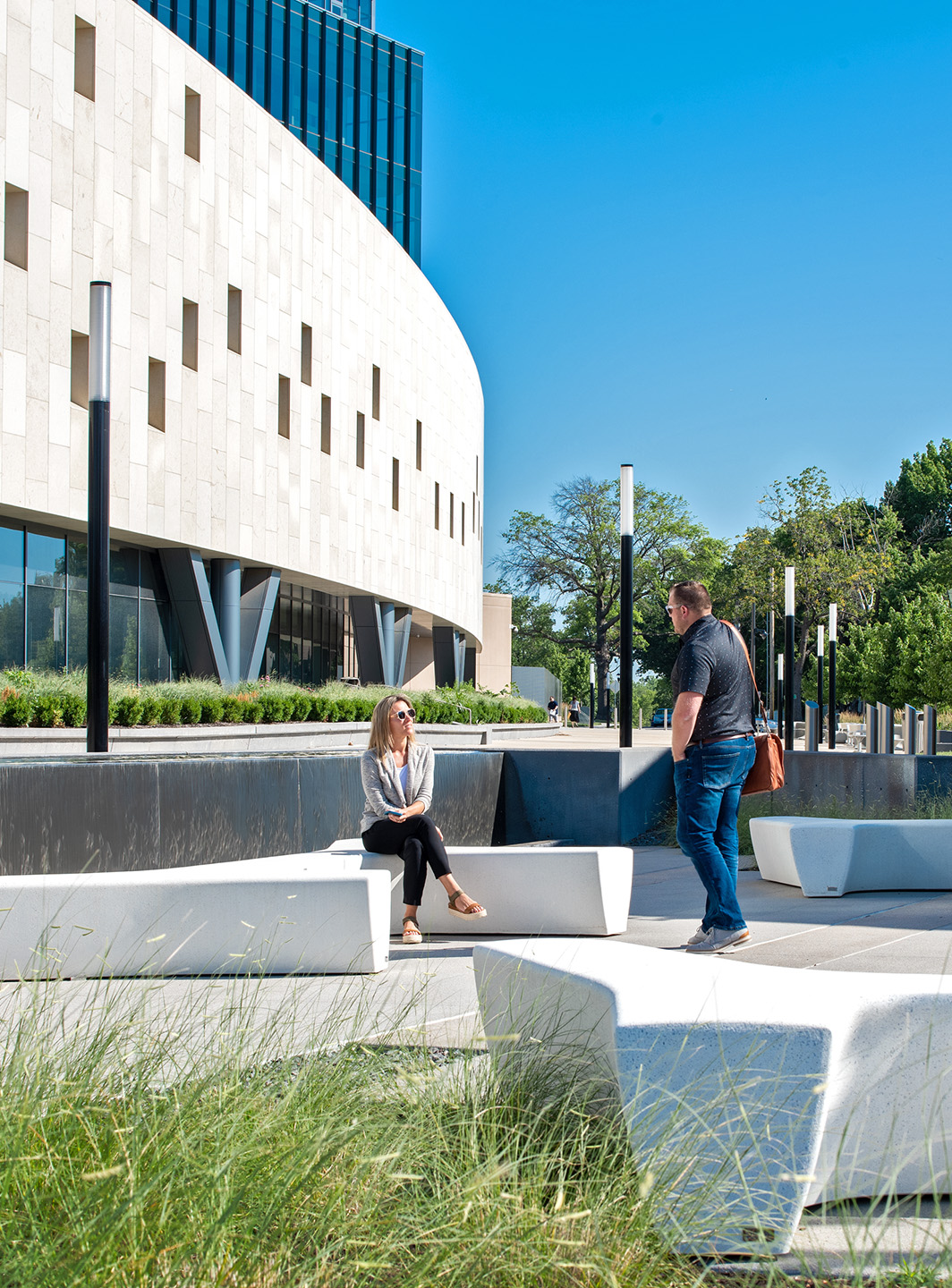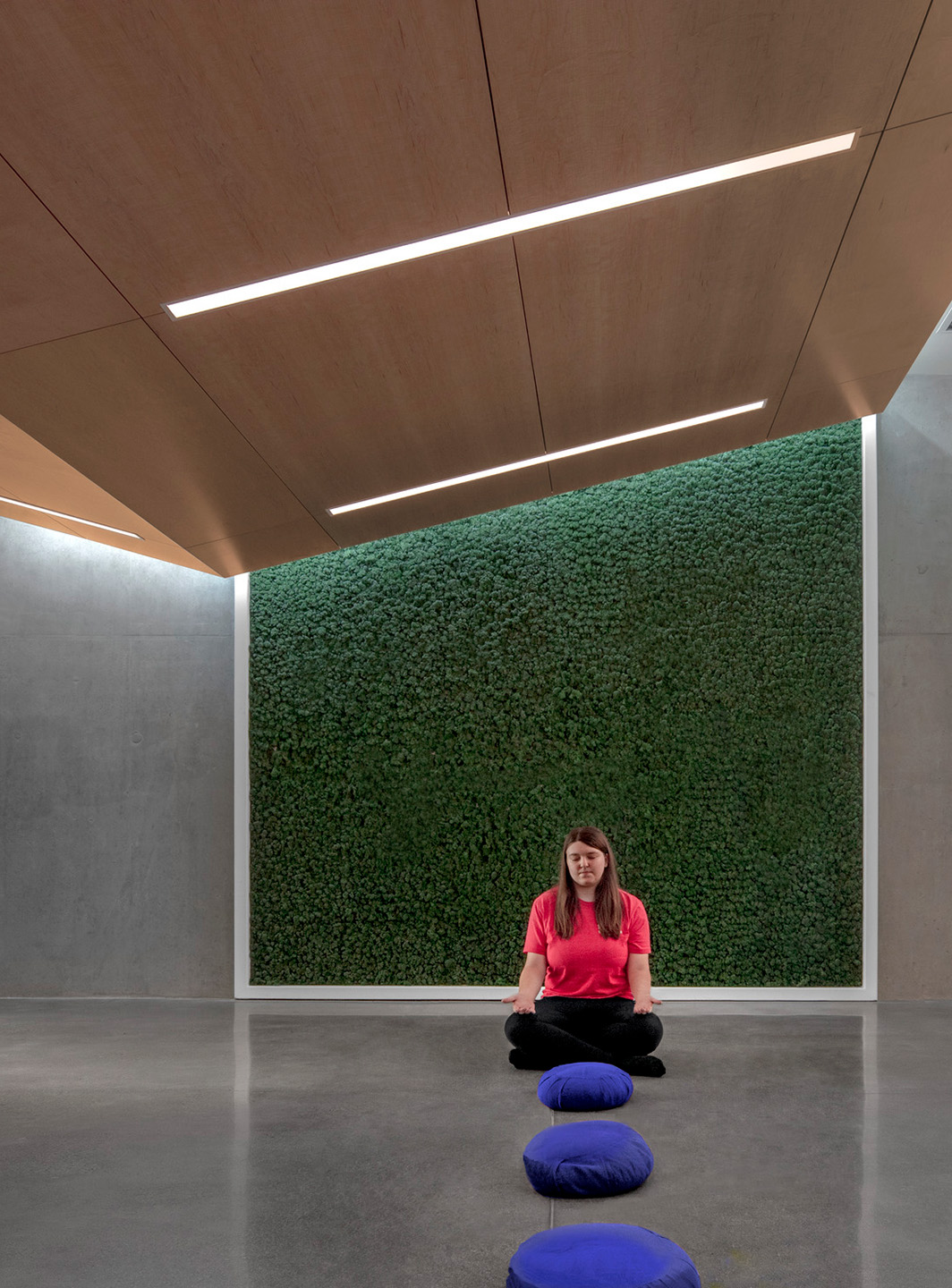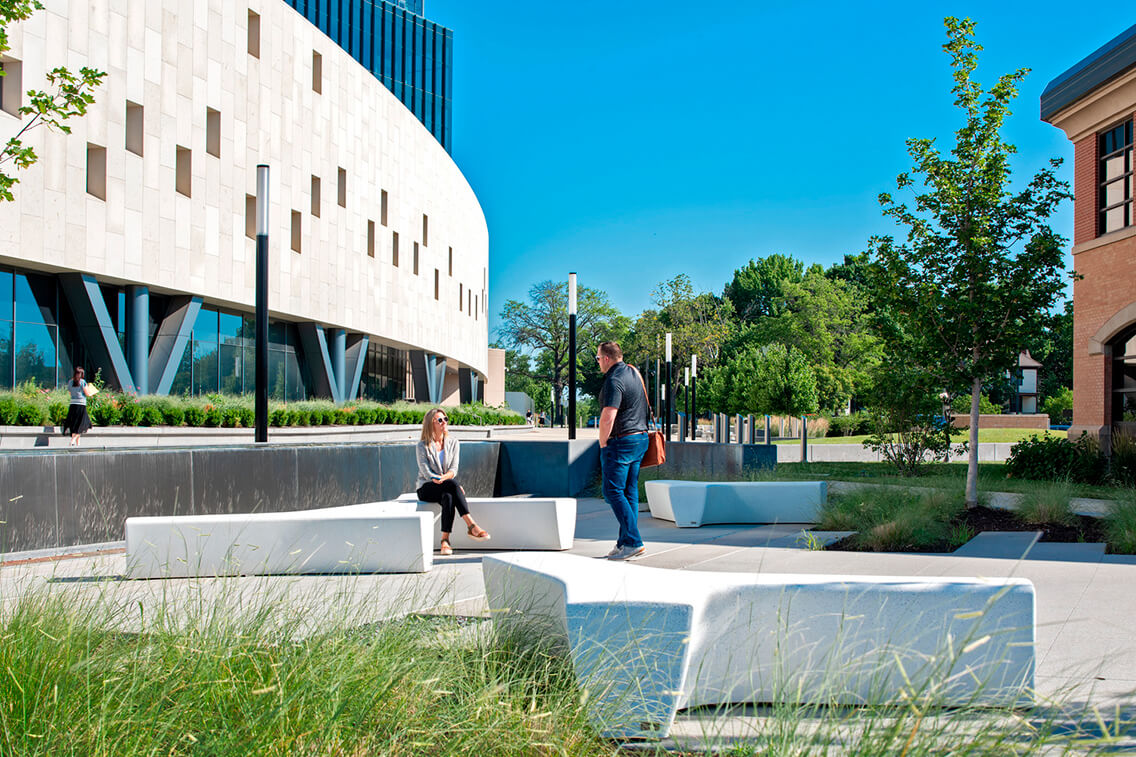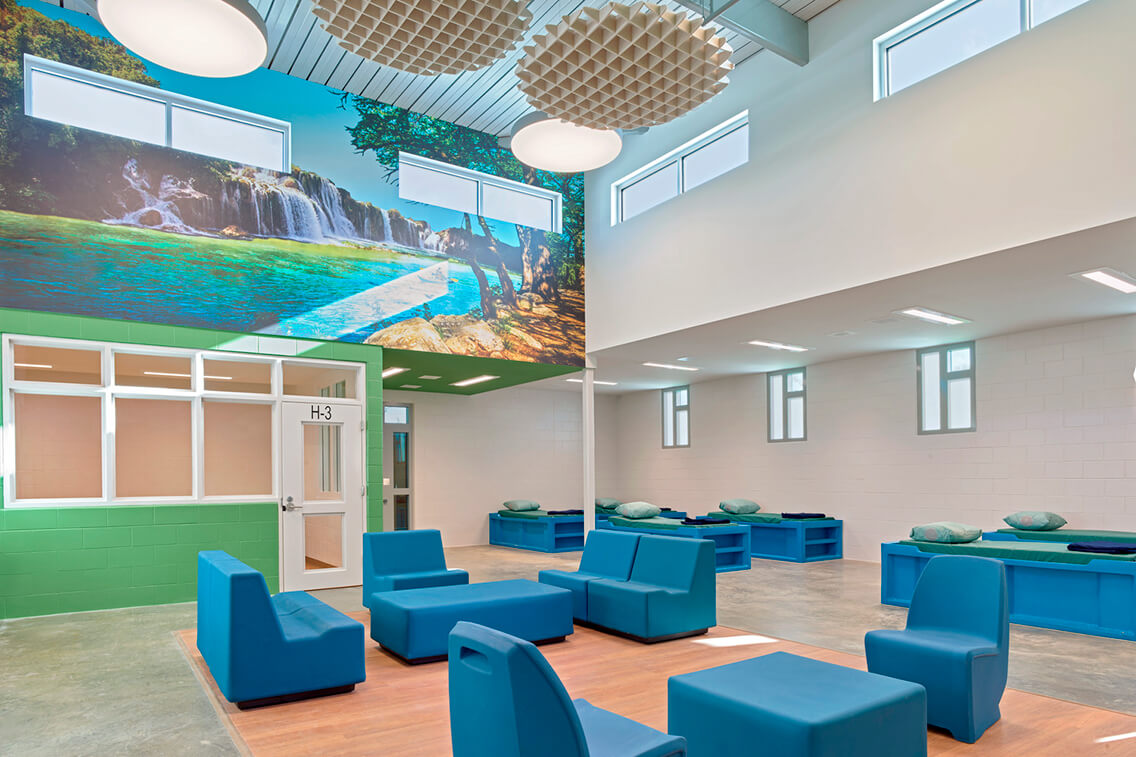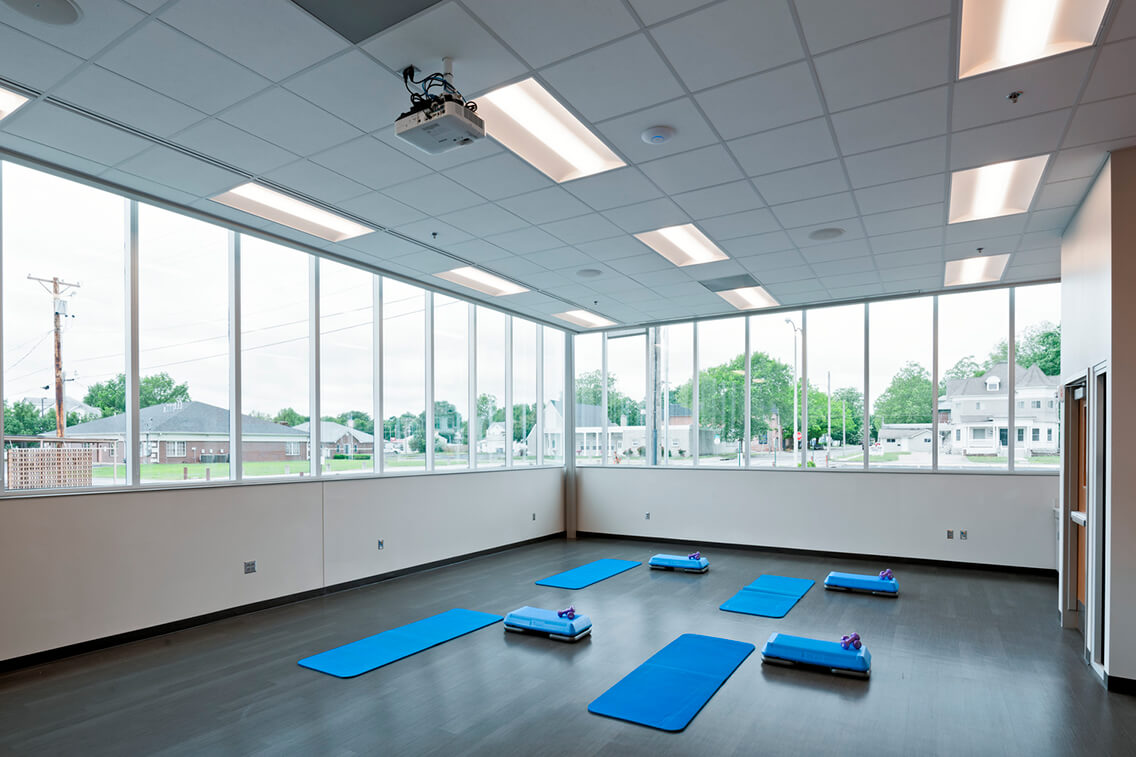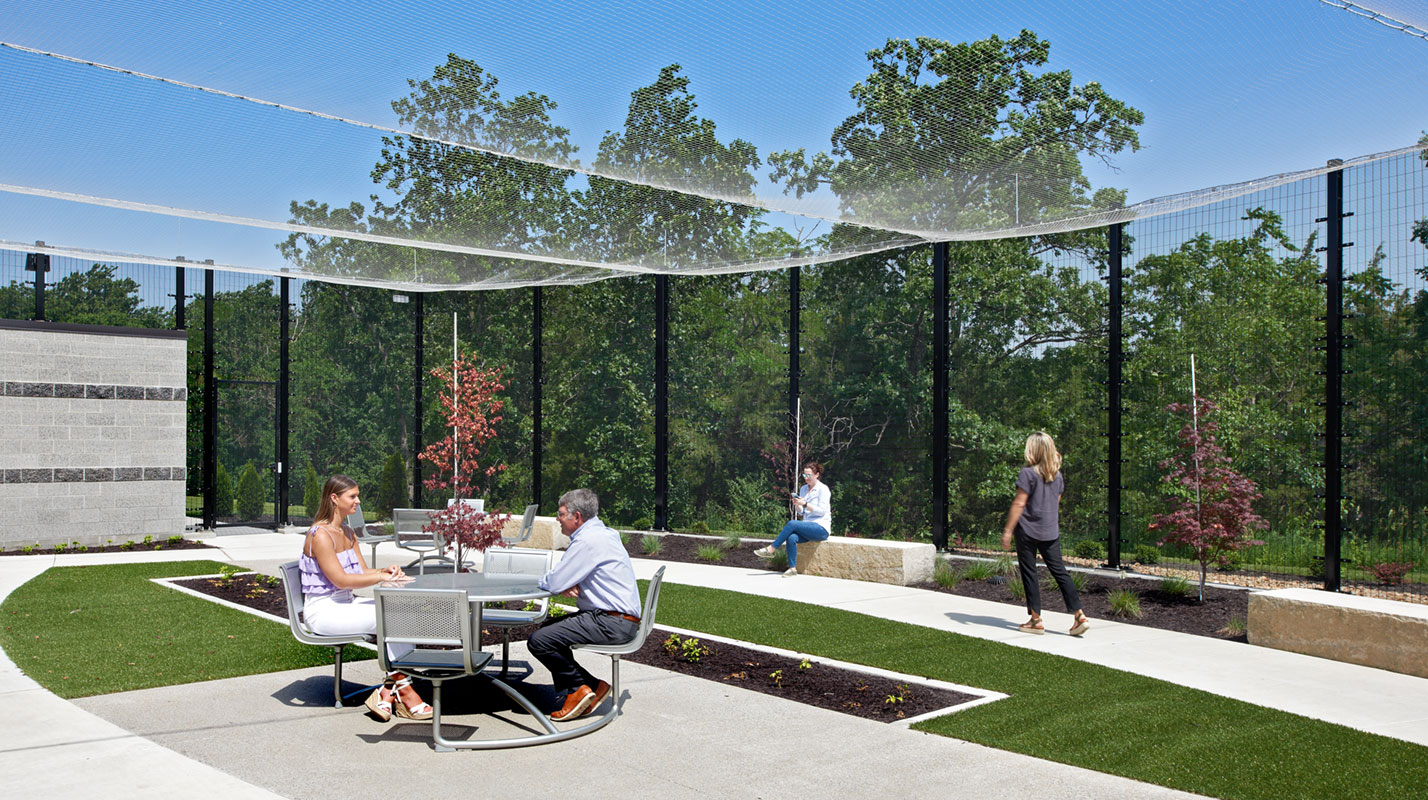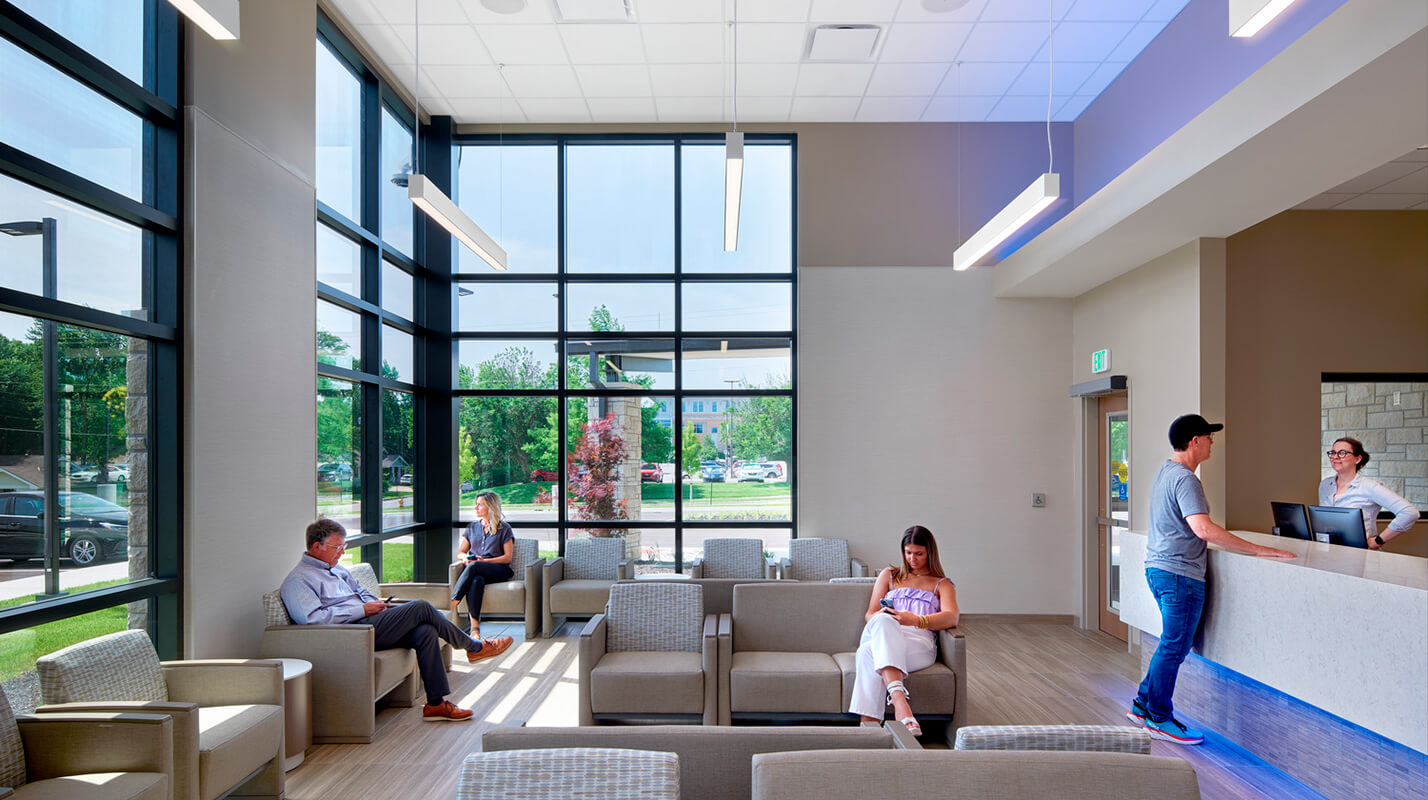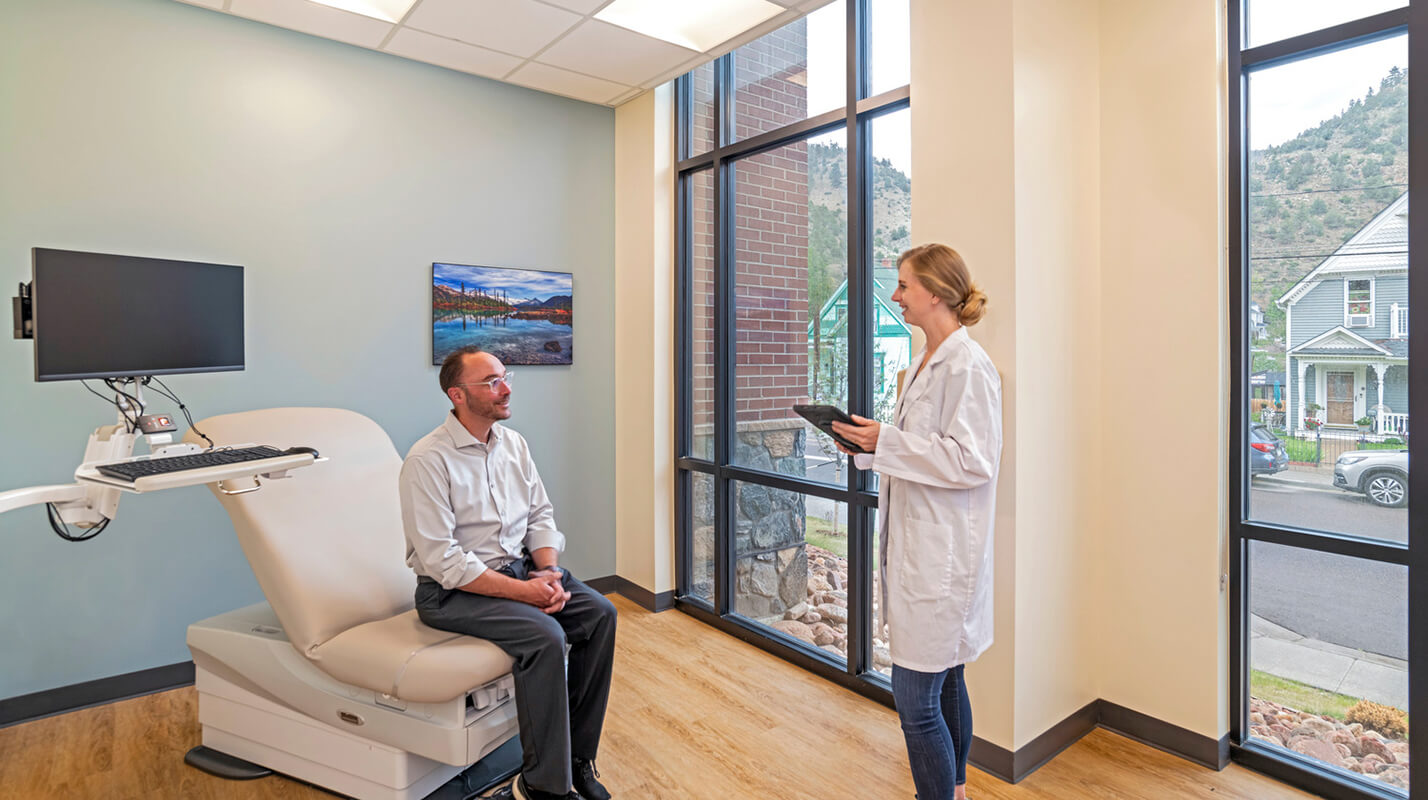Redirecting county justice systems from punishment to treatment
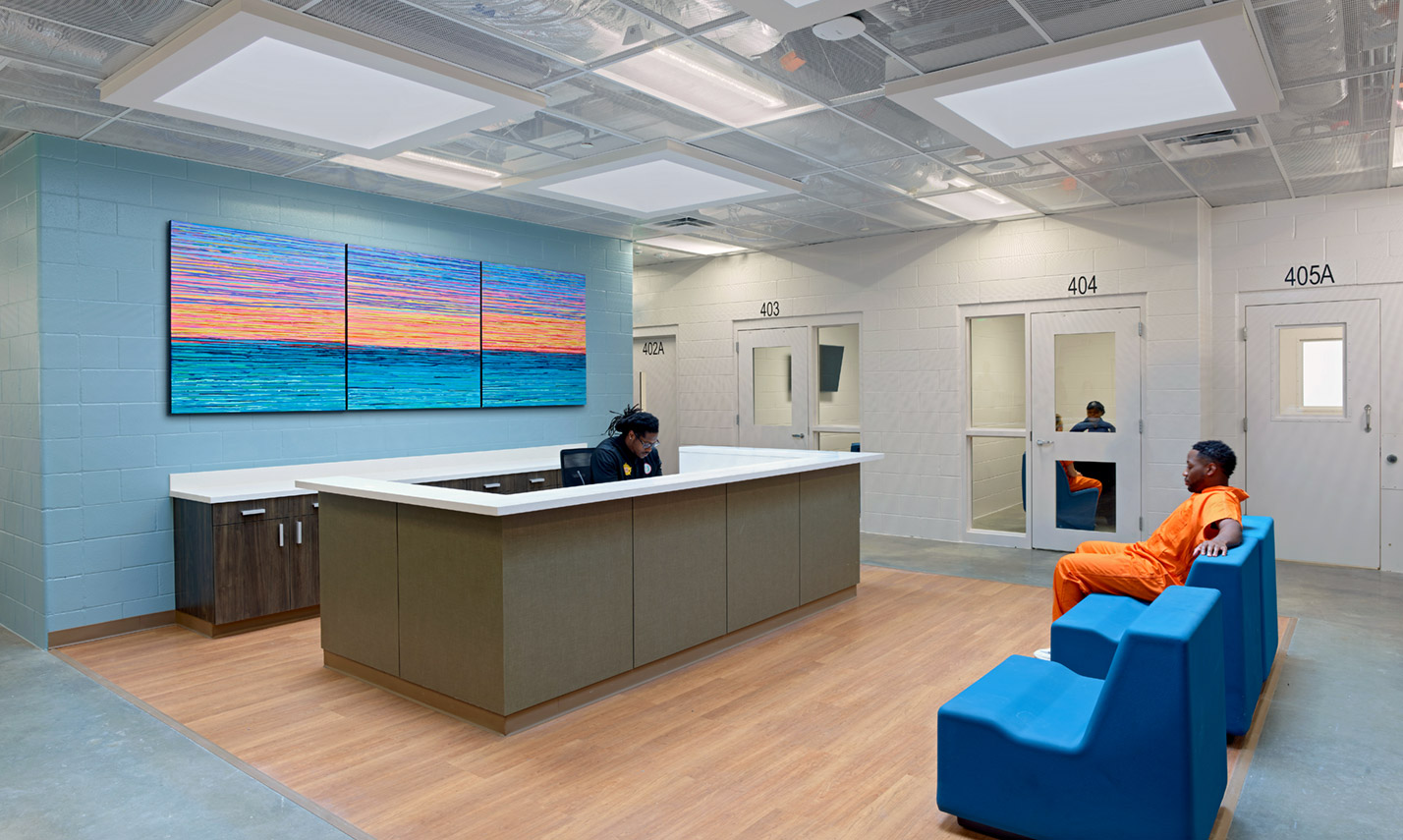
Re-entry programs and diversionary strategies help communities reduce crime and rebuild lives
Decades of “tough on crime” sentencing laws have skyrocketed the number of citizens in United States custody. The U.S. criminal justice system today has the highest level of detention in the world, accounting for 25% of the world’s in-custody population according to the Brennan Center for Justice. It’s grown by 700% since 1980.
The result is overcrowding at all levels of the U.S. justice system and a disproportionate impact on low-income and minority communities, and those who are mentally ill or addicted to alcohol and drugs. The federal First Step Act is slowly shifting the pendulum toward less punitive policy, setting a foundation for meaningful criminal justice reform.
First Step begins to ease mandatory minimum sentences, correct inequities in federal drug sentencing, and encourage early “good time” release and vocational training. On the state level, there are also changes, including the decriminalization of marijuana in many states and New York City’s plan to shift its jail population to smaller, safer community jails.
But in local communities, where county-level justice systems have struggled to cope with their new realities, grassroots efforts are taking the lead in implementing new solutions.
The reality of county-level justice: more than overcrowded jails
Local community justice systems have been cracking under the weight of three factors that have led to rising jail populations, rising recidivism, and rising budgets. They have created what amounts to a crisis in jails across the country.
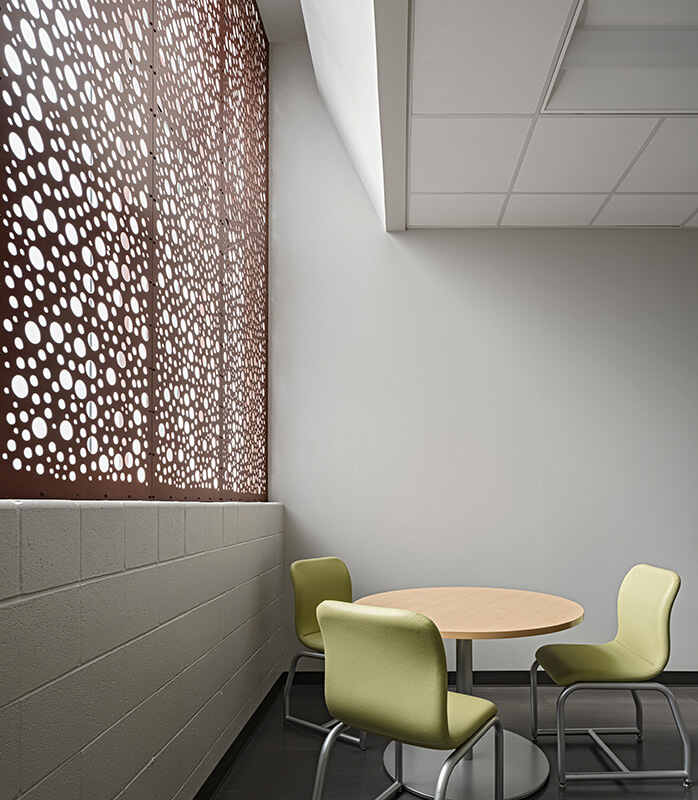
- Lack of consistent access to mental health services brings many people back into custody. The Bureau of Justice Statistics found that 37-44% of offenders suffer from mental health illness, and 13% of the seriously mentally ill jail population are also diagnosed with substance abuse disorders. Not only are jails not equipped to house and treat these offenders safely, but 95% of jail suicides are committed by those with mental health disorders.
- Tougher drug sentencing laws have been crowding jails with low-level offenders for years, and the opioid crisis has made the problem worse. Today, 65% of the U.S. in-custody population struggle with substance abuse, according to the National Center on Addiction and Substance Abuse. Drug addiction and mental health concerns are also bringing many more women into custody, creating housing challenges.
- Without effective programs or facilities to treat mental health and substance abuse issues, people in detention do not heal and often re-offend. In some cases, these recurring problems infect family systems and create cycles of criminal behavior and recidivism.
For so long, the justice system has focused on containing offenders with three-strikes-and-you’re-out laws, longer sentencing and stiffer penalties. Yet detention is expensive, costing as much as $500,000 to $1 million per person over their criminal history. For older people in custody who require medical care, the cost can be much higher. Continually constructing larger facilities to detain more people—and staffing them, which can represent 80% of the lifecycle cost of a jail—is unsustainable for many communities.
Forward-thinking solutions that address the root causes
What is turning the tide is not just the financial cost. Research shows that this strategy of locking up all offenders has not had positive long-term effects on our communities. An increasing number of Americans now know people who have been in jail due to mental health issues and substance abuse problems.
Alternative sentencing, diversionary and treatment programs cost less to administer. They often succeed in lowering recidivism and indirectly lowering justice system, social services, and family welfare costs as a result. Detention situations and extended sentences have been shown to make low-level offenders such as perpetrators of theft or minor drug crimes worse, not better.
Adults who spend time in custody are less likely to complete high school or find employment and are more likely to suffer mental health problems. Studies also show factors that reduce criminal behavior, such as functional families, feeling loved and connected, a strong self-image, educational interventions, and meeting financial needs.
“The more we can help people become successful and have a positive self-image, the better,” says Mark Goldman, principal at Atlanta justice facilities planning firm Mark Goldman & Associates. “With the opiate epidemic and with mental illness becoming more widespread, impacting all classes and races, more taxpayers have friends and relatives who have been in the justice system. Knowing people who have been locked up makes taxpayers supportive of rehabilitative programs and facilities rather than warehousing offenders.”
A number of trends are emerging to help divert low-level offenders from jail and provide a continuum of care that assists them in healing and reentering the community. They include:
- Post-arrest screening for defendants, with brief intervention and referral to treatment
- Diversion to community treatment under pre-trial supervision conditions
- Establishing a drug court for diversion prior to trial or upon conviction
- Treatment access within the jail and under probation or parole supervision
- Treatment offered through local public health systems and contracted providers
- Outpatient, intensive outpatient, residential and medication-assisted treatment
- Residential treatment in a modified therapeutic community within a state jail or a separate facility
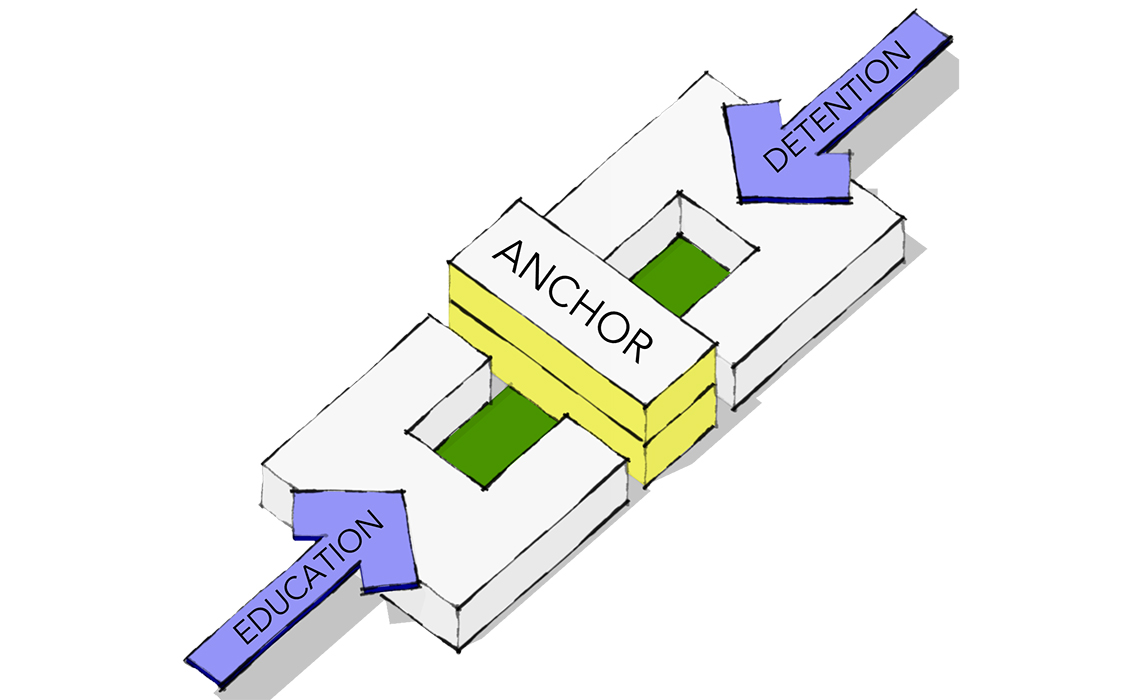
Seeking grassroots solutions in Appalachia
One such example is Blount County, Tennessee, population 130,000. Nestled in the Appalachians—the epicenter of the opioid crisis, nearly everyone here knows someone who has been affected. The county’s recovery court (formerly drug court), an alternative sentencing program offered to adult nonviolent felony offenders with a history of drug and alcohol abuse, has ballooned from 25 participants to more than 100 in the last eight years.
Like many drug courts around the country, its goal is to reduce recidivism by providing treatment, monitoring, required employment, community service, life skills education and other services. It’s a model of success that the greater community is building upon.
Through the recovery court, offenders address factors that have kept them from moving forward in their lives and reoffending, says program director Amy Galyon. Individuals who qualify receive mandatory court monitoring, drug testing, treatment programs, and a probation officer and case manager for a minimum of two years. Every participant also attends a basic life skills course that covers medical care, disease prevention, nutrition, personal finance and employment readiness. Participants may also receive individual help accessing employment opportunities, continuing education and community resources.
The program is not for everyone, and not everyone succeeds. But local law enforcement and correction officers were quick to notice results, says Amy.
“They were the first to see that participants in our program weren’t going back into detention. They looked good, had a legal license, had jobs, and were not breaking the law.”
Amy Galyon, Program Director at Blount County Drug Court
A community task force: goals and outcomes
Opioid addiction is a leading cause of recidivism in Blount County, and it’s overcrowding its 20-year-old jail. Certified for 350 beds, its population has been as high as 600 in-custody. As county leaders hired consultants to conduct a feasibility study for jail expansion, it soon became clear that they needed to build on what was already working in Blount County, not build a larger jail. The county formed a task force, Blount County Community Justice Initiative (BCJI), to explore alternatives. Believing that they did not have a jail problem, but a criminal behavior problem to solve, they set out to:
- Enhance public safety and the quality of life for all citizens.
- Minimize victimization and help repair harm caused by crime.
- Achieve cost efficiencies and effectiveness throughout the system.
- Provide appropriate facilities and programs based on individual needs and risks.
- Decrease the rate at which people return to jail for committing new crimes.
- Provide programs that address factors that contribute to criminality, including substance abuse, addictions, and mental illness, using innovative and evidence-based programs and principles.
- Make time served more effective by fostering accountability and encouraging positive life changes.
- Maximize staff effectiveness and job satisfaction.
- Accommodate growth and change in populations, programs and operations.
“We have an extremely effective program here that we can build on, that helps individuals and shows them that people in this community care about them,” says Charles Sterling, BCJI project manager. A cross-section of experts in the BCJI studied this problem, including the recovery court director and judge, the district attorney, Sheriff’s department, probation director, county commissioners, architects, planners and well-respected clinicians.
After nine months of study, county leaders postponed plans to expand the jail to instead focus on reducing the jail population. They decided to program and design a new facility—a transition center that will offer programs and services aimed at the root causes of criminal behavior. While only 30% of the current detention population is eligible for this facility and its programs, its follow-on impacts will reduce bed requirements at the county jail and aim to heal citizens so they can rebuild their lives, find jobs, and raise families. In 2018, the Board of County Commissioners approved the transition center as the next step of their comprehensive vision for establishing a more effective and humane county justice system.
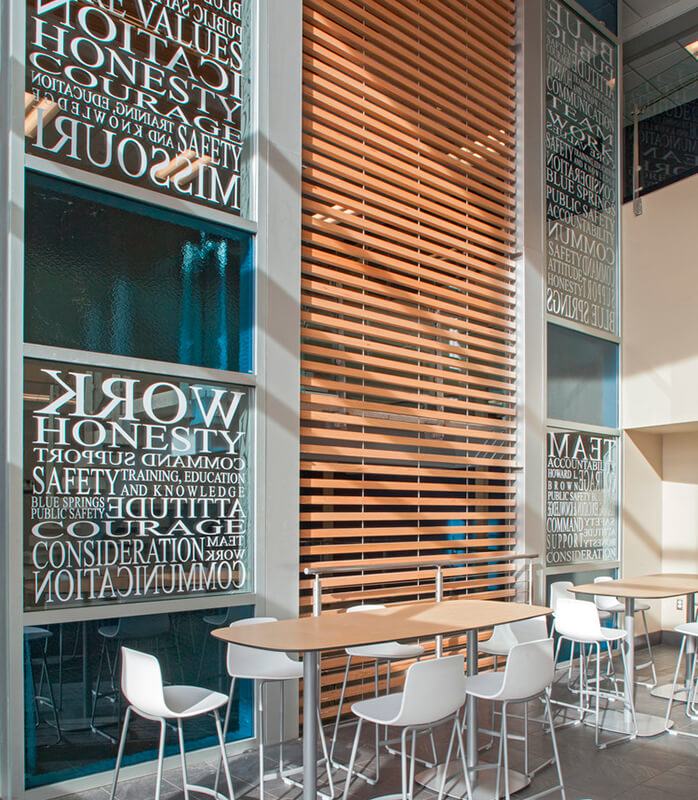
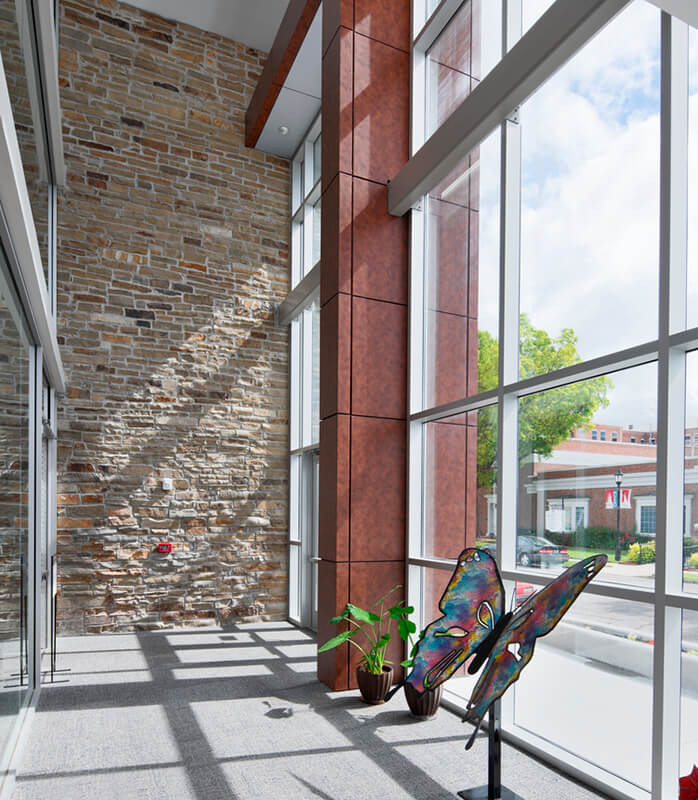
Using evidence-based facility design to house programs that deliver results
Transitioning offenders back into their community not only requires a different philosophy and approach but also it calls for different facilities. It’s well established that those in custody don’t recover well in harsh, high-security jail environments. In fact, attempting to treat mental health and addiction in facilities that were not designed for that purpose can be challenging at best and counterproductive at worst.
Evidence-based design calls for a more normative and non-threatening environment. Providing abundant natural light along with views and access to outdoor spaces can support therapeutic goals while still maintaining an appropriate level of accountability. Designs may incorporate natural materials such as wood, stone and glass to blend the building into its environment and create a warm, welcoming experience. Colors, furnishings, sound-absorbing materials, and art may be used to induce calm and lower stress and anxiety, while shared spaces such as lounges and kitchens can offer community and a more home-like setting.
In a typical jail, 25% of space is allocated for support services and 75% for housing. A facility that is designed to heal and cycle people back into productive lives requires more spaces for support services, counseling, learning and treatment.
Evidence also shows that mental health is improved by levels of privacy and autonomy. While these facilities maintain a secure environment, they also provide for mobility and levels of privacy with appropriate sight lines for staff. The intention is to design a highly structured, pro-social environment in which treatment staff, security staff, and residents can interact to influence attitudes, perceptions and behavior.
Blount County’s transition center lowers demands on existing jail
County leaders studied their existing facility to determine whether it could meet their vision, but like many facilities constructed in the 1990s, it was designed with different goals. They also considered locating the new transition center at the existing justice center, but ultimately decided that it would be more effective to house the program elsewhere, although the rural nature of the county makes finding the right site a challenge.
The new facility is master planned as a therapeutic residential environment that will provide in-custody and non-custody recovery and supervision programs. Half of the space is programmed for classrooms, training space, recreation and an array of support services. Small, 12-person male and female dormitories will provide for 24% of the county’s bed needs, significantly lowering the demands on the existing jail.
As a lower security facility, it’s also designed to offer residents more mobility and freedom, including in-person visitation and collaborative kitchens for meal preparation. Design elements such as wood and glass, natural light and access to the outdoors produce the effect of a small college campus offering spaces for living, learning, healing and community connection. Residents will live there in accordance with conditions of stay imposed by the judges in their cases and be employed off-site. As a secure facility, it will also have a lockdown component, yet one that is designed to be appropriate to its environment.
The center also includes space for administrative offices, a probation office, internal and external (day program) classrooms and a courtroom. It allows the recovery court and veterans court programs to expand their offerings and capacity to service those who do not currently qualify. County leaders are now researching which additional evidence-based programming they will put into place that will further their goals of changing the mindsets and behaviors that contribute to reoffending.
“People are coming out of jail, getting their voting rights back, going into employment and giving back. Instead of taxpayers supporting to keep them locked up, they are becoming taxpaying citizens themselves.”
Amy Galyon, Program Director at Blount County Drug Court
Lessons for other communities: a model in the making
While they never intended to build a model for other communities, Charles believes that the enthusiastic collaborations being built across Blount County—and their results—do set a strong example. The vision came not from one corner, but from law enforcement, county leadership, health and human services and the community at large all working together.
“Every aspect of our justice operation was asking to be involved. Private-sector recovery leaders nominated themselves,” says Charles, adding that the local Rotary Club has now acquired an educational toolkit to prevent addiction. “Anyone who has a heart to help people, there is a place at this table for them.”
Nearly all members of the Correction and Recovery Saves Committee, a committee of the Blount County Commission, have personal stories of being touched by the opioid epidemic and a passion for helping people overcome it, he says. The committee includes four county commissioners, two representatives from the sheriff’s office, two local business leaders, administrators from the local hospital and a private recovery center, and two judges as ex officio members.
Partnerships are also the lifeblood of the county’s successful recovery court program, which partners with the county library, health department, community action agency, private employers and nonprofits. They’re creating alliances with Celebrate Recovery, Day One Rural Re-Entry, and other programs that serve this population, and are going into community groups asking for employment opportunities and help. The published life skills curriculum was developed and delivered as a collaborative effort among the court, the library, justice system, health department and local businesses.
“This is a supportive community. We may disagree and have different perspectives, but the leadership here—they really do want to make a difference and work together in a collaborative way to fix these problems.”
Amy Galyon, Program Director at Blount County Drug Court
Once you have the right people at the table, shifting the focus of an established system requires thoughtful programming that is tailored to the needs of the local community. This requires thoughtful analysis of your detention facilities and programs to provide real data on high- and low-risk people in custody, male and female populations, mental health and substance abuse treatment needs, and more. This allows counties to develop solutions that will meet current realities and grow with them over time.
Community education and communication are key to building support
Creating public support for any justice initiative takes time, communication and education. Most people are not familiar with addiction’s neurological impacts or with research on what works for rehabilitating lower-level offenders. Public officials may encounter a “not in my backyard” sentiment when it comes to siting programs and facilities and concern over tax increases. When the time comes to fund your solutions, it’s important that the public understands the needs and the proposed solutions.
In Blount County, that has meant creating a popular outreach program that brings recovery court participants into schools and community groups to share their successes. They’ve also created a 501(c)3 nonprofit foundation to support their efforts. The county solicited community input throughout its study process, long before solutions were proposed. Consultants recommend communications strategies and assist with public meetings to gauge public perceptions of the justice system and invite ideas. Engaging local media and regularly communicating through county websites and social media also helped build support and change mindsets.
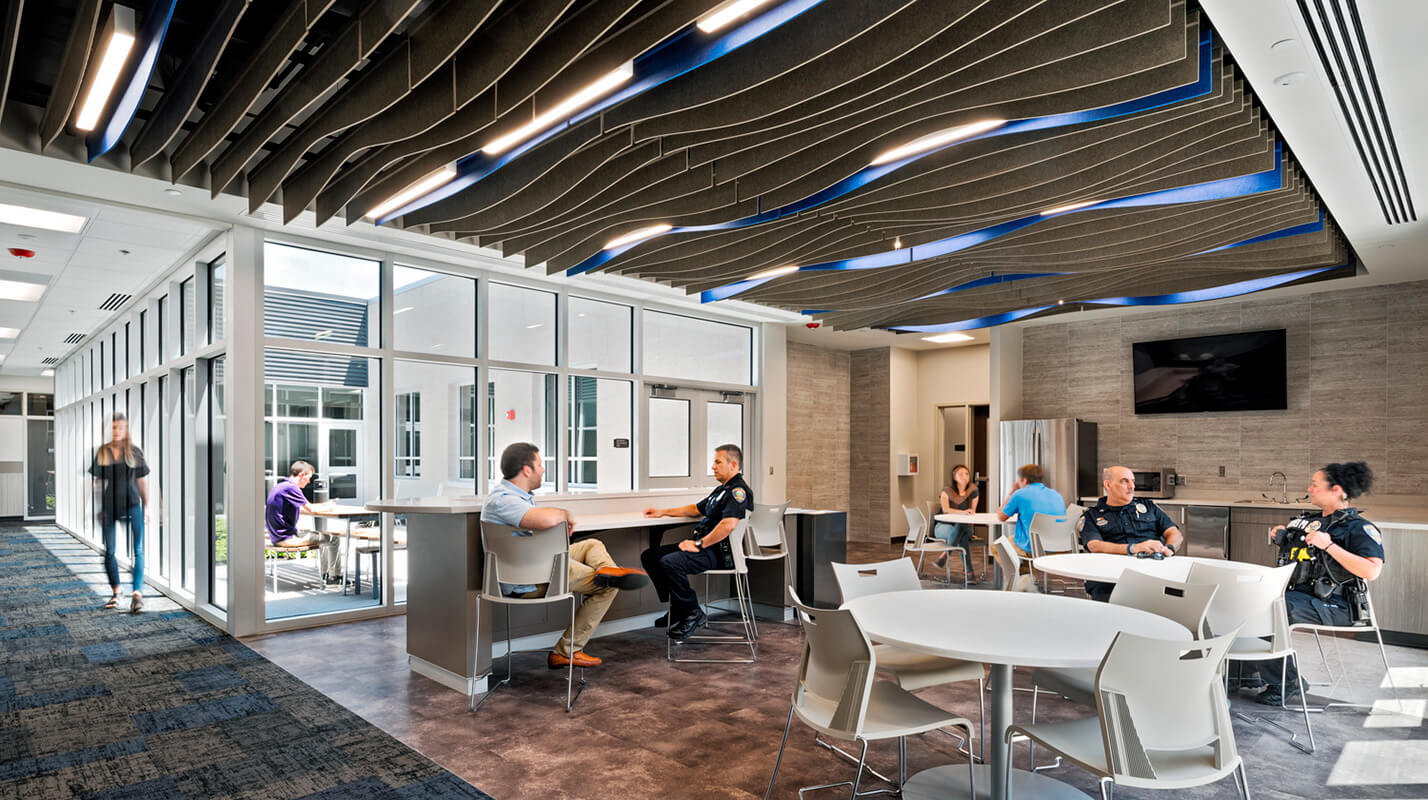
“Two years ago, I would have said, ‘lock them up,’ too,” says Charles. “Today, my mindset is that something was driving that person to criminal behavior, and they need help. We are helping to educate people so that maybe they will not make that first mistake that can be so hard to reverse.”
While many communities across America are still attempting to build their ways out of the challenges of today’s criminal justice system, more are realizing that expanding aging jails does not always deliver the desired results. Jails have their place; there will always be a need to secure violent offenders. But as the justice system separates those who can be rehabilitated from those who cannot or choose not, in order to house and heal them effectively, the likely result is fewer people in jail, reduced recidivism, and a lower overall cost to our communities.
The current state of our justice populations: by the numbers
700%
increase in federal jail population since 1980
600%
increase in federal jail spending since 1980
25%
of the world’s in-custody population is represented by the U.S.
65%
of the U.S. in-custody population meets criteria for substance abuse addiction
44%
of people in jail suffer from mental health issues
11%
of the seriously mentally ill jail population is diagnosed with co-occurring substance abuse disorders
Authors
Stay on the leading edge
Stay up to date on emerging trends, research, hot topics, and more delivered conveniently to your inbox.
"*" indicates required fields

